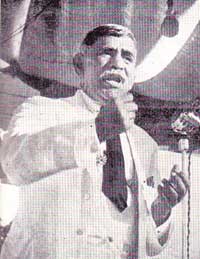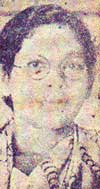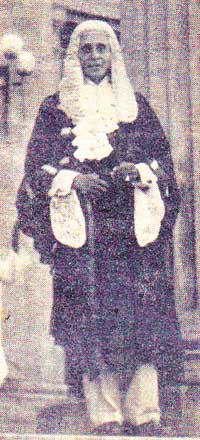First parliamentary elections
The first general election under the parliamentary system of government introduced by the Soulbury Commission started this week sixty years ago. The first election was held over a period of 19 days with voting beginning on August 23, 1947.
Elections were being held to elect 95 Members of Parliament (MPs) from 89 seats with four multi-member constituencies electing seven MPs. (These were Colombo Central 3, Balangoda 2 and Kadugannawa 2).
Over three million (3,048,145 to be exact) voters were eligible to vote in 1947. They went to the polls on six days in August and 13 days in September with the election being over on September 20.
For the first time they saw symbols on the ballot paper against each candidate's name. The voters had to mark their choice in the box against the preferred candidate's name and symbol. The symbols were introduced for the benefit of those who were illiterate. In all, 24 symbols were used. At the earlier elections they just dropped the ballot paper into the coloured box of their choice. Each candidate was given a colour then. Although the 1947 general election was fought on the basis of political parties (again a 'first') the symbols were allotted on an individual basis. It was only in 1956 that each political party was allotted a symbol. That was after the introduction of the system of recognized political parties by the Commissioner of Elections. |
First results
 |
| D. S. Senanayake addressing an election meeting |
Voting took place in ten constituencies on the first day. Among the electorates to go to the polls on the first day was Mirigama, where the leader of the United National Party (UNP),
D. S. Senanayake was contesting. He polled 26,762 votes against Lanka Sama Samaja Party (Bolshevick Leninist Party) candidate Edmund Samarakkody who got 10,673 votes, thereby winning by a majority of 16,089 votes.
This was the first time Senanayake faced a contest in his political career. In 1924 he had been elected uncontested for the Negombo seat in the Legislative Council and in 1931 and 1936 to the Minuwangoda seat in the State Council.
 |
Florence Senanayake,
first woman MP |
The first woman Member of Parliament, Florence Senanayake was elected to the Kiriella seat. Contesting from the LSSP she polled 5,535 votes in a constituency with a total voting strength of 30,307. Five others contested her. Second was T. K. W. Chandrasekera who got 3,294 votes.
The 1947 general election was held on the basis of the recommendations of the first Delimitation Commission appointed to carve out the different constituencies. The Commission recommended 89 constituencies with the largest number (18) being in the Western Province. Central Province had 14 with Southern Province having 11 and North Western 10. The other provinces had less than ten each. They were Northern & Sabaragamuwa 9 each, Eastern 7, Uva 6 and North Central 5. |
Speaker
moves out
 |
| Speaker A. F. Molamure |
During the tenure of the first State Council
(1931-36), the Speaker A. F. (he was knighted later and was Sir Francis) Molamure absented himself from the sittings for three months without leave and lost both the position of Speaker and the seat (Dedigama) on August 25, 1935. In effect he resigned due to personal reasons.
He was elected Speaker after a contest with Nominated Member Sir Stewart Schneider who received 18 votes to Molamure's 35.
Succeeding him was Forrester Obeysekera, Member for Avissawella who was Deputy Speaker. His term of office came to an end soon after when he was defeated at the 1936 election. Vaithyalingam Doraisamy was elected Speaker of the second State Council. |



